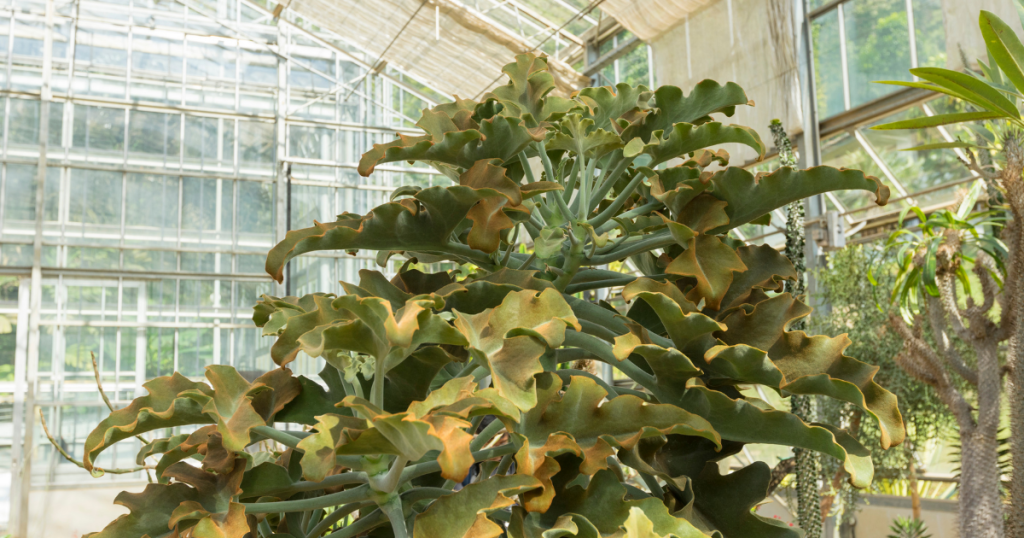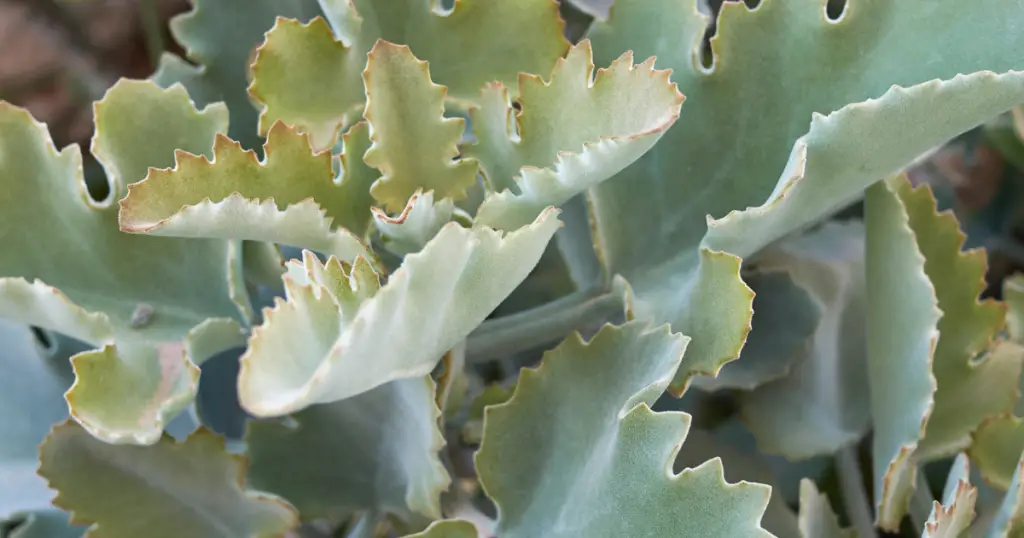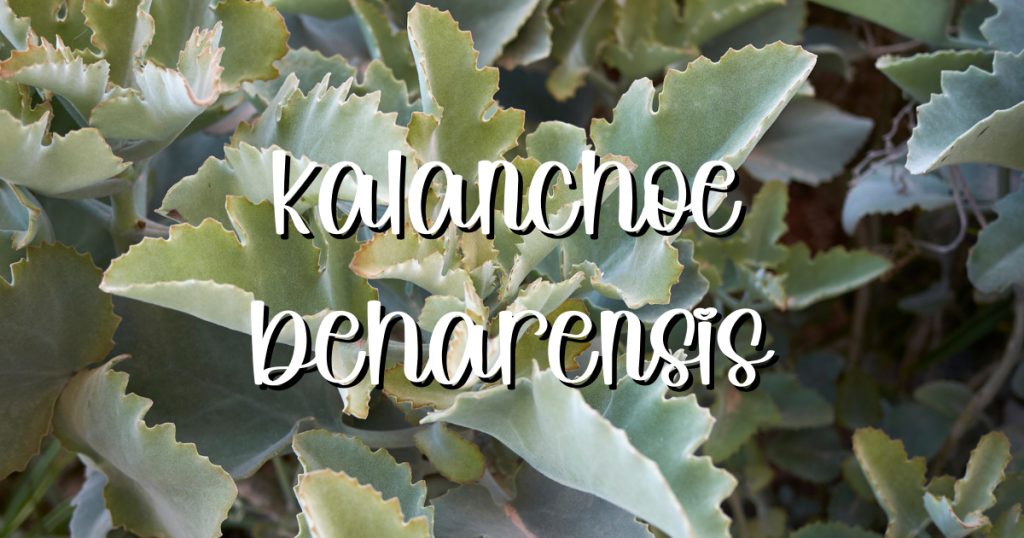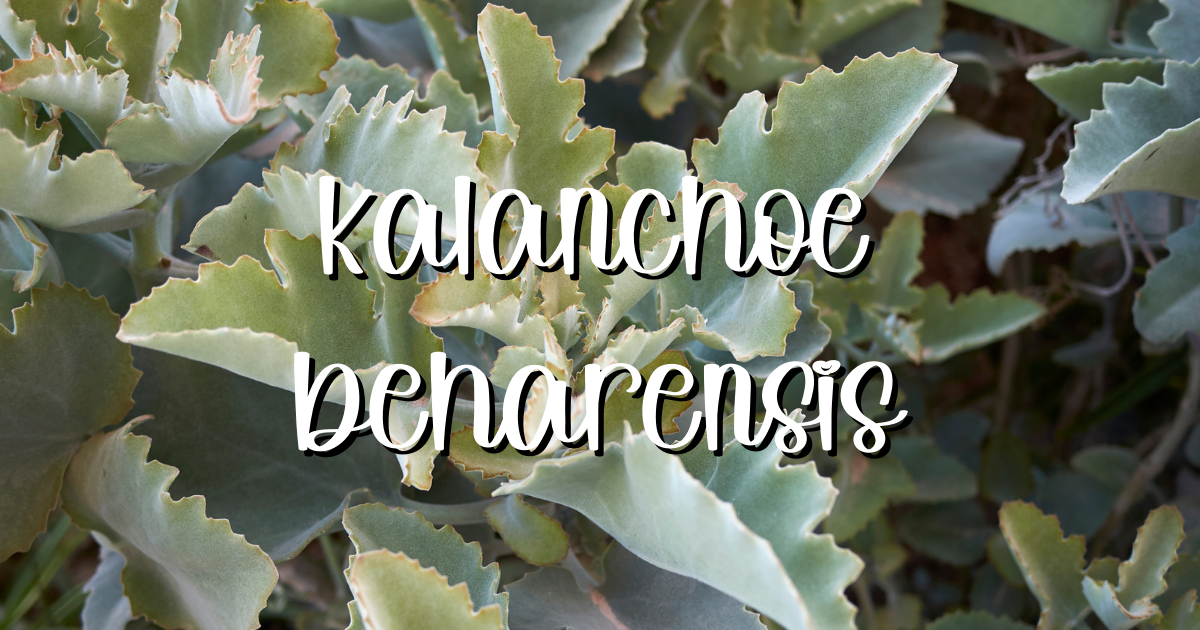Kalanchoe beharensis, also known as ‘Elephant Ear’, ‘Velvet Leaf’, and ‘Felt Plant’, is a popular succulent that belongs to the family Crassulaceae. It is native to Madagascar and is appreciated for its unique foliage and texture.

Description
Kalanchoe beharensis ‘Elephant Ear’ typically grows to be about 3-5 feet in height and has large, thick, felt-like leaves that are covered in a silver-gray coating. The leaves are green when young and mature to a deep bronze-red color. Kalanchoe beharensis ‘Felt Plant’ is also known for its unique shape, which resembles an elephant’s ear or a large arrowhead. ‘Velvet Leaf’ stems are woody, and it has small, bell-shaped flowers that are greenish-yellow in color.

One of the standout features of Kalanchoe beharensis ‘Elephant Ear’ is its unique foliage. The leaves are covered in a thick layer of hairs, which helps to protect the succulent from drying out. The hairs also give Kalanchoe beharensis ‘Felt Plant’ a velvety texture, which is where its common name Velvet Leaf comes from. ‘Velvet Leaf’ leaves also have a silver-gray coating, which gives it a shimmering appearance in the sunlight.
You might also like: 10 Cactus and Succulent Adaptations: How These Incredible Plants Have Adapted to Survive in Extreme Environments
‘Elephant Ear’ Care
Soil
Kalanchoe beharensis ‘Elephant Ear’ is a versatile succulent that can grow well in a variety of environmental conditions. The plant prefers well-draining soil that is rich in inorganic matter, and it can tolerate a wide range of soil types, including sandy, loamy, or rocky soil. The succulent can thrive in full sun to partial shade and is able to tolerate both hot and cool temperatures.
You might also like: Succulent Soil: Ultimate Guide & 4 DIY Recipes to Keep Your Succulents Happy and Healthy
Water
Kalanchoe beharensis ‘Felt Plant’ is an extremely drought-tolerant succulent that can survive long periods of dryness, which makes it a low-maintenance plant. Overwatering Kalanchoe beharensis ‘Velvet Leaf’ can cause root rot, so it’s important to allow the soil to dry out completely before watering again. Watering should be done sparingly, and it is better to underwater than overwater.
You might also like: How & When to Water Succulents So They Don’t Die
Fertilization
While Kalanchoe beharensis ‘Elephant Ear’ is relatively easy to care for, it can benefit from regular fertilization during the growing season. A balanced fertilizer can be applied every month to encourage healthy growth and flowering. Additionally, pruning can help maintain the shape and size of the plant and promote branching. Pruning can be done by removing stem tips or cutting back overgrown branches.
You might also like: Succulent Fertilizer

Hardiness Zone
Kalanchoe beharensis ‘Elephant Ear’ is hardy in USDA zones 9-11, and it can be grown both indoors and outdoors. If you live in a colder climate, it is best to grow ‘Felt Plant’ in a container and bring it indoors during the winter months. When growing indoors, it is important to provide your ‘Velvet Leaf’ succulent with bright light, such as a south-facing window.
You might also like: Succulent Care by Zones

How to Propagate Kalanchoe beharensis ‘Elephant Ear’
In terms of propagation, Kalanchoe beharensis ‘Elephant Ear’ can be grown from stem cuttings or leaf cuttings. It is important to let the cuttings callus over for a few days before planting them in well-draining soil. It is also essential to avoid overwatering ‘Felt Plant’ during the propagation process.
You might also like: Propagating Succulents 4 Ways: The Best Guide Ever
In summary, Kalanchoe beharensis ‘Elephant Ear’ is a unique and beautiful succulent that is easy to care for and appreciated for its unique foliage and texture. This succulent is hardy in USDA zones 9-11, and it can be grown both indoors and outdoors. Kalanchoe beharensis ‘Felt Plant’ silver-gray, felt-like leaves make it a standout addition to any succulent garden or indoor collection.


Where to Buy Succulents Online


